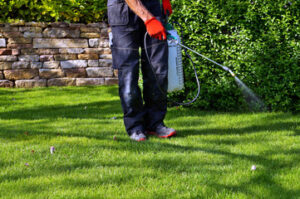Insulation Removal Is a Complicated Task That Requires Safety Guidelines
Perth Insulation Removal is a key home improvement project that can help improve air quality, reduce energy costs, and prevent pest infestation. However, it’s also a complicated task that requires adherence to strict safety guidelines.

Old insulation can become contaminated with moisture, pest infestation, and other issues that affect its ability to regulate indoor temperatures. As a result, it may need to be removed and replaced.
The attic insulation in a house can become damaged or degraded over time, causing it to lose its effectiveness. This can lead to inconsistent indoor temperatures and high energy bills. Hiring professionals to remove attic insulation and replace it with new materials can enhance energy efficiency and improve indoor air quality.
Visible signs of deterioration, such as crumbling and water-stained areas, are an indication that the attic insulation needs to be removed. Other indicators include inconsistent indoor temperature levels, signs of rodent and insect infestations, and rising utility bills.
Insulation removal involves a detailed process that includes a thorough inspection to assess the condition of the existing material. After the inspection, professionals will select the appropriate type of insulation to replace it. This will depend on factors like climate, budget, and energy efficiency goals.
Once the new material has been selected, the professionals will prepare the attic for insulation installation by sealing leaks, repairing structural damage, and ensuring adequate ventilation. They will also ensure the proper installation of the new insulation, using either spray foam or batts or rolls and blown-in cellulose.
The final step in the insulation removal process is to vacuum up any remaining debris and contaminants with an industrial-grade hose, ensuring that the attic space is completely clean at the end of the project. This step is important because it can help to minimize the spread of dust, mold spores, and other pollutants that might be present in the old insulation.
Insulation removal is a task that should not be undertaken by untrained homeowners, as improper handling can lead to health hazards. Fiberglass insulation, for example, contains small glass fibers that can irritate the eyes, skin, and lungs if they are inhaled or come into contact with the skin. Moreover, the removal and disposal of insulation material requires special equipment that is not easily available to homeowners. A professional service will handle all aspects of the process, including cleaning and disposing of the insulation in accordance with environmental and safety regulations. They will also handle the disposal of any hazardous materials found in the attic insulation, ensuring that they are safely and properly disposed of.
Preparing the Workspace
Insulation can lose its effectiveness due to damage, moisture buildup, or pest infestation. In these cases, it’s necessary to remove the existing insulation and replace it with new materials. Insulation replacement isn’t an easy job, and it’s not a DIY task that you should take lightly. Hiring professional installers will ensure the removal process is done correctly and safely, which will protect your home and health.
Depending on the type of insulation and its condition, the removal process can take anywhere from 6 to 18 hours to complete. Before you get started, you need to prep your workspace. First, close off any openings into living spaces that lead from the attic. Also, place tarps on floors to keep dust from spreading throughout your home and prepare trash bags for disposal. Next, put on protective gear like gloves, a face mask, and goggles. Finally, get a ladder that’s sized properly for your attic’s entry point and ceiling height.
Once you start the removal process, follow proper decontamination protocols to prevent mold and mildew growth and other contamination hazards. You should also use a HEPA vacuum to thoroughly clean surfaces and dispose of any materials contaminated with harmful substances. Finally, use heavy-duty waste bags to collect the discarded insulation, and consider renting a dumpster if you have a large amount of material to dispose of.
Choosing the Right Insulation
Once the old insulation is removed, it’s time to choose the best option for your home. The type of insulation you select depends on your region’s climate, your budget, and the conditions in your attic. If you need help selecting the right insulation, consult with a professional who can give you insights into your specific situation and provide recommendations based on their experience in insulation installation.
Removing and replacing your home’s insulation isn’t a simple task, but it’s an important one. When completed incorrectly, it can lead to a variety of problems in your home, including poor air quality, increased energy costs, and compromised indoor comfort. For expert advice on insulation installation and removal, contact the professionals at American Crawlspace.
Taking Safety Precautions
While DIY insulation removal can be a cost-effective way to improve your home, the process is not without risks. Incomplete cleanup or improper handling can disturb structural components and cause future problems. Additionally, certain types of insulation can be contaminated by rodent droppings or mold, creating a toxic environment that presents serious health hazards. To avoid these issues, it’s a good idea to seek professional assistance or certification from an experienced insulation contractor.
Before tackling the task of insulation removal, you should prepare the workspace. This includes clearing the area and sealing off areas that may be contaminated with rodent droppings or mold. Additionally, you’ll want to gather the necessary tools for the job. These include gloves, a mask, goggles, and a utility knife for cutting. A vacuum cleaner with a HEPA filter, a ladder, and bags for disposal are also essential. Additionally, wearing disposable coveralls will help keep contaminants off your regular clothing and skin.
You should also turn off power to the attic and disconnect any live wires or junction boxes, preventing the risk of electric shock. A dust mask will protect you from inhaling insulation fibers and irritants. Eye protection prevents contamination from irritating your eyes, while durable gloves provide a firm grip on tool handles and minimize contact with contaminants. A hard hat can also protect your head from potential hazards in the attic, such as low beams.
Lastly, you should use a dust pan to collect debris as you work and dispose of it promptly when the job is done. Cleaning the working area after insulation removal can also be helpful to prevent contamination. Dampen a cloth with a mild detergent solution and wipe surfaces to disinfect them. Disposing of contaminated materials according to established guidelines will minimize environmental impact.
Taking these precautions can reduce the risk of injury or illness during insulation removal and ensure that the job is completed correctly. In addition, hiring an experienced and certified professional will ensure that the job is completed quickly and efficiently. It’s also important to understand the estimated duration of insulation removal, which can range from 6 to 18 hours based on attic size and type of insulation.
Recycling
Insulation removal is often a necessary first step in preparing an attic or crawlspace for new insulation. Damage from moisture or rodent infestations can render old insulation ineffective and harmful to your health and home’s structure, and older types may contain materials that are toxic. Insulation removal paves the way for fresh, safe, and energy-efficient new insulation that will boost your home’s value and comfort.
During insulation removal, it’s important to pay attention to proper disposal methods. Certain insulation types, such as fiberglass and cellulose, can be recycled rather than thrown in the trash. Contact your local waste-management services or recycling center for guidelines and recommendations on handling and disposing of these materials.
In most cases, recycled insulation can be reprocessed into new insulation products without losing its thermal or energy-efficient properties. This not only reduces waste, but also cuts down on the need for virgin materials, which require much more energy to produce. Recycled fiberglass, for example, saves 64% of the energy required to make new materials.
While it’s possible to recycle your own insulation, many homeowners find it easier and more convenient to work with professional removal services that handle the entire disposal process for them. These companies are trained to handle various types of insulation and are well-versed in the specific regulations surrounding their disposal. They can ensure that your old insulation is handled correctly to prevent environmental impacts, and they may also offer other eco-conscious disposal options.
It’s also worth mentioning that reclaimed and surplus insulation isn’t necessarily less hazardous than new insulation, as these materials have already been processed before they’re repurposed. However, these materials are generally a safer option than traditional fiberglass and cellulose insulation because they’ve been properly treated and tested before being reused.








